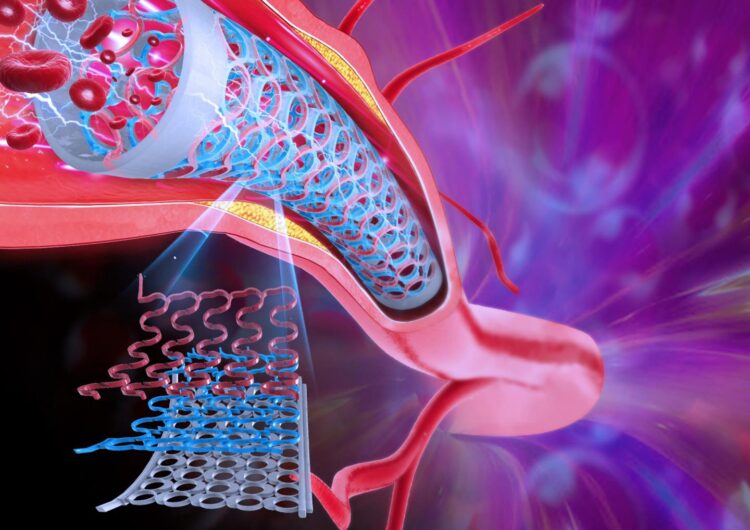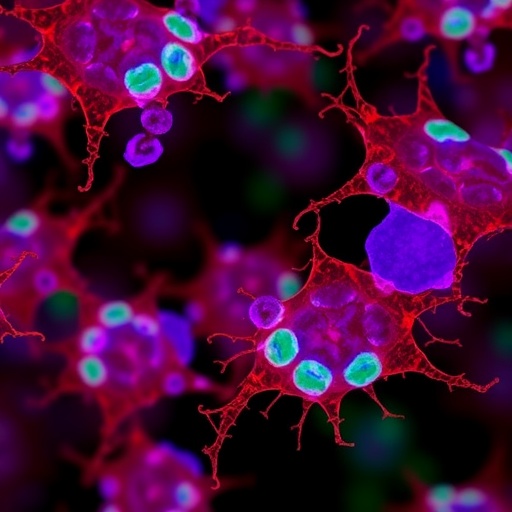New research in Nano Energy introduces revolutionary scalable material that senses and powers itself
From the biggest bridges to the smallest medical implants, sensors are everywhere, and for good reason: The ability to sense and monitor changes before they become problems can be both cost-saving and life-saving.
To better address these potential threats, the Intelligent Structural Monitoring and Response Testing (iSMaRT) Lab at the University of Pittsburgh Swanson School of Engineering has designed a new class of materials that are both sensing mediums and nanogenerators, and are poised to revolutionize the multifunctional material technology big and small.
The research, recently published in Nano Energy, describes a new metamaterial system that acts as its own sensor, recording and relaying important information about the pressure and stresses on its structure. The so-called “self-aware metamaterial” generates its own power and can be used for a wide array of sensing and monitoring applications.
The most innovative facet of the work is its scalability: the same design works at both nanoscale and megascale simply by tailoring the design geometry.
“There is no doubt that the next generation materials need to be multifunctional, adaptive and tunable.” said Amir Alavi, assistant professor of civil and environmental engineering and bioengineering, who leads the iSMaRT Lab. “You can’t achieve these features with natural materials alone–you need hybrid or composite material systems in which each constituent layer offers its own functionality. The self-aware metamaterial systems that we’ve invented can offer these characteristics by fusing advanced metamaterial and energy harvesting technologies at multiscale, whether it’s a medical stent, shock absorber or an airplane wing.”
While nearly all of the existing self-sensing materials are composites that rely on different forms of carbon fibers as sensing modules, this new concept offers a completely different, yet efficient, approach to creating sensor and nanogenerator material systems. The proposed concept relies on performance-tailored design and assembly of material microstructures.
A “Game Changer,” from the Human Heart to Space Habitats
“We believe this invention is a game changer in metamaterial science where multifunctionality is now gaining a lot of traction,” said Kaveh Barri, lead author and doctoral student in Alavi’s lab. “While a substantial portion of the current efforts in this area has been merely going into exploring new mechanical properties, we are going a step further by introducing revolutionary self-charging and self-sensing mechanisms into the fabric of material systems.”
“Our most exciting contribution is that we are engineering new aspects of intelligence into the texture of metamaterials. We can literally transform any material system into sensing mediums and nanogenerators under this concept,” added Gloria Zhang, co-lead author and doctoral student in Alavi’s lab.
The researchers have created multiple prototype designs for a variety of civil, aerospace and biomedical engineering applications. At a smaller scale, a heart stent using this design can be used to monitor blood flow and detect signs of restenosis, or the re-narrowing of an artery. The same design was also used at a much larger scale to create a mechanically-tunable beam suitable for a bridge that could self-monitor for defects on its structure.
These materials have enormous potential beyond Earth, as well. A self-aware material uses neither carbon fibers nor coils; it is light in mass, low in density, low in cost, highly scalable, and it can be fabricated using a broad range of organic and inorganic materials. Those qualities make them ideal for use in future space exploration.
“To fully understand the huge potential of this technology, imagine how we can even adapt this concept to build structurally-sound self-powering space habitats using only indigenous materials on Mars and beyond. We are actually looking into this right now,” said Alavi. “You can create nano-, micro-, macro- and mega-scale material systems under this concept. That is why I am confident that this invention can build the foundations for a new generation of engineering living structures that respond to the external stimuli, self-monitor their condition, and power themselves.”
###
The paper, “Multifunctional meta-tribomaterial nanogenerators for energy harvesting and active sensing” (DOI: 10.1016/j.nanoen.2021.106074), was co-authored by Zhong Lin Wang, PhD, Hightower Chair and Regents’ Professor at Georgia Institute of Technology, Jun Chen, PhD, Assistant Professor at Pitt, and Pengcheng Jiao, PhD, Research Professor at Zhejiang University.
This research is supported in part by the NIH under award number R21AR075242-01, and it is a continuation of U.S. Provisional Pat. Ser. No. 63/048943, entitled “Self-aware Composite Mechanical Metamaterials and Method for Making Same,” filed at Pitt.
Media Contact
Maggie Peavlick
[email protected]
Original Source
https:/
Related Journal Article
http://dx.





